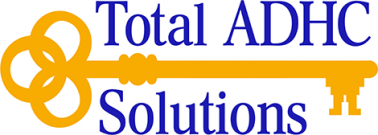Opening an Adult Day Service Center: Funding
Amanda G. Sillars, MSW, LCSW
Diversification is the Key to Success
One of the first questions asked (and that should be asked) is: how much per day do/can we charge? The next question is, how will the center be reimbursed?
Depending on the funding source, your rate may be fixed. If it’s private pay, you can set the rate. Rates vary immensely and are generally tied to the amount of care and the services provided. These can range from as little as $45 per day to $125 per day, with an average of about $70 per day.
There are multiple reimbursement streams for adult day service programs, although to maximize funding, these payer sources must be taken into consideration before the center opens. This all but guarantees your center’s success. If your center is already operating, it is possible to increase funding sources, although the process may be more complicated. The top adult day consulting companies will research and provide advice on various revenue opportunities to ensure your center’s income is diversified and doesn’t solely rely on one or two sources.
Below are the primary payment sources for the social model: adult day care or adult day services and the health model: adult day health care:
- Medicaid
- Medicaid primarily pays for the health model (adult day health care) and does not reimburse for the social model (adult day care).
- This is usually a fixed rate, although in some states, the fixed rate depends on the level of care—from minimum assistance to maximum assistance.
- Some states pay a per-diem rate (daily rate based on a minimum number of hours), and others pay in various time increments (fifteen minutes, etc.). These are known as units of service.
- Medicaid will either use your center’s assessment or their own to determine the number of days and, if applicable, the number of units each participant will receive, based on their level of care and need for supervision and assistance.
- In order to be paid by Medicaid, your center will need to meet specific guidelines. These regulations can be quite stringent, and the process of becoming certified can be delayed months and even years for not knowing explicitly what is required.
- Medicaid Managed Care Organizations (MCO)
- These operate similar to the Medicaid reimbursement structure, although the center may have the ability to negotiate the rate with the MCO. (A future blog post will explore negotiating the MCO’s rate to your advantage.)
- MCOs are the newest payer source around, and many of the kinks are still being worked out. This means that many opportunities still exist in engaging MCOs as rich payer sources, creating a win-win situation for all parties.
- Veterans Administration (VA)
- The VA generally pays a daily rate and will determine how many days each participant may attend, usually two to three days per week, although they will occasionally cover four to five days per week.
- To be paid by the VA, your center must secure a contract with them. In the past, this has been a lengthy process, but partly due to the diligent work of the National Adult Day Services Association (NADSA) in Washington DC, the contracting process will be much simpler within the next year.
- Your center must meet stringent requirements that may differ from the Medicaid and the Managed Care requirements for a contract and reimbursement.
- Private Pay
- With this form of payment, you can set the rates and the services that are provided. You may charge extra for services such as showers or transportation, special diets and other add-ons.
- There is a movement toward centers that take private pay only. They have chosen this road simply because they don’t want the difficulties, frustrations and complications that often come while working with government-funded agencies.
- A trend is emerging toward building high-end resort-style adult day care centers, similar to the trend that occurred in assisted living ten years ago and continues to grow with the Baby Boomers demanding the best.
- Respite Care
- This is usually funded through a county’s Area Agency on Aging (AAA). Depending on your county, this reimbursement stream may be very good or extremely poor. As part of our consulting services, we explore this revenue stream to determine if it is an available funding source and help you develop the program to provide respite care.
- Long-Term Care
- This is similar to private pay. The participant pays your center directly for the service, and the participant requests reimbursement from the long-term care insurance company.
- Extra Reimbursement Streams
- Depending on the city, county or state in which you live, other forms of reimbursement may also be available and developed with the support of a skilled adult day consultant.
Diversification in adult day services is crucial to the success of your center. Relying on one source of income (especially if this is supplied by the government) is at best a headache. At worst, it dooms your center to failure. Although starting a center with multiple revenue streams is best, even if your center is already operating, a skilled consulting team can research and help you develop new sources of income you may never have known existed.
Please take a look at our other blogs in the series for more information.
Interested in taking the next step? We have everything you need to start your dream center, from consulting to policy and procedure manuals to our “Startup in a Box” package, training, forms, and everything in between!
Help others, help yourself, help your community. Open an adult day service center today!
